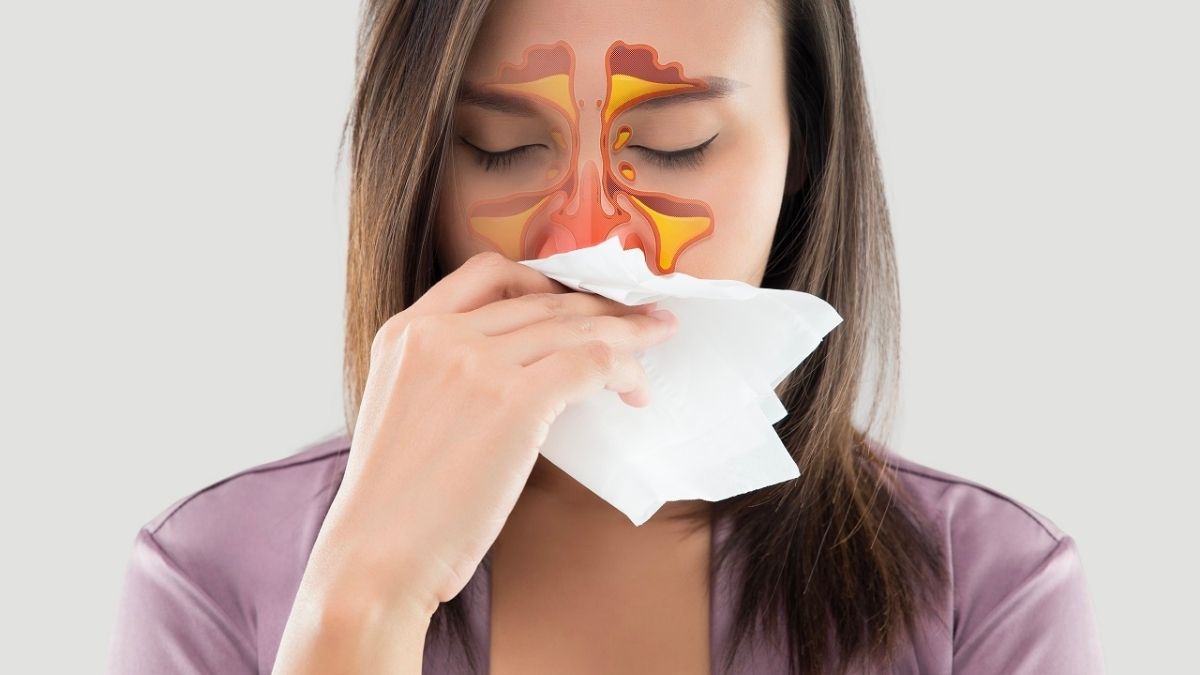How to remove sinus mucus plug at home? Discover effective ways to remove a sinus mucus plug at home. Explore medications and get answers to frequently asked questions. Find relief today with mucusplug.net!
How to remove sinus mucus plug at home

Uncover practical methods and natural remedies to efficiently clear sinus mucus plugs within your home environment. Learn step-by-step techniques, lifestyle adjustments, and helpful tips to relieve sinus congestion. Master the art of addressing sinus mucus plugs with ease using our guide on “How to remove sinus mucus plug at home”.
-
Keep the air moist
Dry air irritates the nose and throat, causing more mucus to form as a lubricant. Placing a cool mist humidifier in the bedroom can promote better sleep by keeping the nose clear and preventing a sore throat.
-
Drink plenty of fluids
The body needs to stay hydrated to keep mucus thin. When a person is sick with a cold, drinking extra fluids can thin mucus and help drain the sinuses.
People with seasonal allergies may also find that staying hydrated helps reduce congestion.
-
Apply a warm, wet washcloth to the face
A warm, wet washcloth can be a soothing remedy for a pounding sinus headache. Inhaling through a damp cloth is a quick way to return moisture to the nose and throat. The heat will help to relieve pain and pressure.
-
Keep the head elevated
When the buildup of mucus is particularly bothersome, it may help to sleep propped up on a few pillows or in a reclining chair. Lying flat can increase discomfort because it may feel like mucus is collecting at the back of the throat.
-
Do not suppress a cough
It may be tempting to use suppressants when experiencing a nagging, phlegm-filled cough. However, coughing is the body’s way of keeping secretions out of the lungs and throat. Use cough syrups sparingly, if at all.
-
Discreetly get rid of phlegm
When phlegm rises from the lungs into the throat, the body is likely trying to remove it. Spitting it out is healthier than swallowing it.
-
Use a saline nasal spray or rinse
A saline spray or irrigator can clear mucus and allergens from the nose and sinuses. Look for sterile sprays containing only sodium chloride, and use sterile or distilled water when rinsing.
-
Gargle with salt water
Saltwater can soothe an irritated throat and may help clear residual mucus. A person can add one teaspoon of salt in a glass of warm water and gargle several times per day.
-
Use eucalyptus
Experts have used eucalyptus products for years to subdueTrusted Source coughs and reduce mucus. People usually apply them directly to the chest. A person can also add a few drops of eucalyptus oil to a diffuser or a warm bath to help clear the nose.
-
Avoid smoking and secondhand smoke
Smoking and secondhand smoke causeTrusted Source the body to produce more phlegm and mucus.
-
Minimize the use of decongestants
While they dry secretions and can alleviate a runny nose, decongestants may make it harder to get rid of phlegm and mucus.
-
Keep allergies in check
Seasonal allergies can lead to a runny or stuffy nose, as well as excess mucus and phlegm.
-
Avoid irritants
Chemicals, fragrances, and pollution can irritate the nose, throat, and lower airways, which causes the body to produce more mucus.
-
Keep track of food reactions
Some foods can cause reactions that mimic seasonal allergies. They may cause the nose to run and the throat to itch, leading to excess mucus. Make a record of foods that trigger an increase in phlegm or mucus.
-
Avoid alcohol and caffeine
Both substances lead to dehydration if a person consumes them in excess. When mucus and phlegm are an issue, drink plenty of warm, noncaffeinated beverages.
-
Take a hot bath or shower
Time spent in a steam-filled bathroom will help to loosen and clear mucus in the nose and throat. Allowing hot water to pulse on the face can also bring relief from sinus pressure.
-
Blow the nose gently
It may be tempting to keep blowing until thick mucus comes out. However, doing so too forcefully may hurt the sinuses, leading to pain, pressure, and possibly infection.
-
Eat plenty of fruit
A diet rich in fruit and possibly soy fiber may lead to fewer respiratory problems that have a link to phlegm.
-
Avoid foods that cause acid reflux
Acid reflux can lead to an increase in phlegm and mucus. People prone to heartburn should avoid trigger foods and ask a doctor about proper management.
>Related post: Mucus Plug In Toilet After Peeing: What It Is, Looks Like & Means
Medications for removing sinus mucus plug at home

There are many different medications available that can treat excess mucus buildup. One of the most popular of these is known as an expectorant.
Expectorants
Expectorants thin mucus and allow more effective coughing to clear airways. Guaifenesin is a common expectorant that is particularly effective at relieving congestion in the chest.
People first began using natural forms of guaifenesin in the 1500sTrusted Source. The Food and Drug Administration (FDA) first approved guaifenesin in 1952. Guaifenesin is the only expectorant available for over-the-counter (OTC) purchases in the United States.
Guaifenesin is available in multiple forms:
- fast-acting tablets
- extended-release tablets
- liquid medications
Individuals taking medications with guaifenesin should stay hydrated and follow all doctor recommendations.
Other medications that treat mucus
The medication dornase alfa also works as an effective mucolytic. Individuals seeking mucus release can inhale this medication. This drug and other mucolytics can help to temporarily reduce mucus buildup throughout the airways.
Anyone seeking more information about medications treating mucus should consult a doctor. A medical professional can recommend the best medication for each case.
Treatments for mild cases
People with severe mucus buildup may need to visit a doctor for a prescription. However, for more mild cases, there are several OTC options.
Mucinex offers a number of products that help fight mucus. Its 12-hour expectorant features extended-release guaifenesin tablets for long-acting mucus relief.
Likewise, Robitussin offers an extra-strength syrup to treat phlegm and mucus. This syrup provides 6 hours of relief from mucus, congestion, and throat irritation.
In addition to guaifenesin, these tablets contain acetaminophen and pseudoephedrine hydrochloride for fever reduction and decongestion.
All of the medications above are available to purchase at local pharmacies.
When to see a doctor
Many believe that colored mucus coming from the nose indicates a bacterial infection. However, it may show that the immune system is fighting a virus or that a person is merely dehydrated.
A runny nose or feeling of stuffiness may also indicate allergies or a sinus infection. Individuals experiencing ongoing allergies or infections should visit a doctor. Severe allergies can require professional attention, and sinus infections may call for antibiotic treatment.
Individuals should also seek medical attention if they experience:
- a cough lasting more than 10 days
- nasal discharge that smells unpleasant
- blurred vision with a stuffy nose
- yellow or white spots on the back of the throat
>Related post: Is mucus plug brown?
FAQs (frequently asked questions) about how to remove sinus mucus plug at home

Explore essential FAQs on effectively addressing sinus mucus plugs in the comfort of your home. Discover expert guidance, tips, and home remedies to alleviate sinus congestion. Get answers to common queries on “How to remove sinus mucus plug at home”.
How do you clear a nasal mucus plug?
- drink plenty of water
- sip ice cold water when you need to clear your throat, rather than coughing or swallowing
- try using a humidifier to help loosen the mucus in your nose and throat
- try using an extra pillow in bed so you sleep in a more upright position, rather than lying flat
- try gargling with salt water
- try rinsing your nose with salt water
What dissolves sinus mucus?
Mucolytics. Mucolytics, such as guaifenesin, are chemical compounds that can help loosen and clear mucus from the nasal passages, sinuses, and lungs. They dissolve chemical bonds in mucus, making it thinner and helping it to drain more easily. Mucolytics are taken by mouth.
How long does it take for a mucus plug to come away?
This ‘plug’ acts as an additional barrier, protecting your baby from bacteria. It loosens and comes away fully any time near the end of your pregnancy, from between about two weeks to a few hours before you begin contractions (although some women may never notice it at all).
What is the thick mucus stuck in my sinuses?
Catarrh is a build-up of mucus in an airway or cavity of the body. It usually affects the back of the nose, the throat or the sinuses (air-filled cavities in the bones of the face). It’s often temporary, but some people experience it for months or years. This is known as chronic catarrh.
What causes a nasal mucus plug?
While a small increase in mucus production is natural at times, the presence of foreign invaders like viruses or bacteria or allergens like pollen can cause the body to overreact and create thick sticky mucus that may clog your throat and nasal passages.
What happens if your sinuses won’t drain?
But if sinus drainage is blocked, glands in the sinuses continue to produce mucus, and the resulting pool of backed-up mucus provides what Dr. Metson calls “the perfect culture medium.” The bacteria grow out of control, causing infection, and the immune system kicks off an inflammatory response.
Why is mucus not draining from my sinuses?
Chronic sinusitis causes the spaces inside the nose and head, called sinuses, to become inflamed and swollen. The condition lasts 12 weeks or longer, even with treatment. This common condition keeps mucus from draining.
How long do sinuses stay clogged?
If you have acute sinusitis, your symptoms likely will go away within a week to 10 days, but some people have symptoms that last up to four weeks. Chronic sinusitis symptoms last 12 weeks or more. Acute sinusitis (sinus infection) can clog your nose with mucus, make your face hurt and make you feel exhausted.
Which sinus is hardest to drain?
The frontal sinus has the most complex and variable drainage of any paranasal sinus.
Can sinuses become permanently blocked?
Some people’s stuffy noses don’t resolve after other symptoms are gone. This long-lasting stuffy nose is called chronic rhinosinusitis. This happens when your sinuses are swollen and inflamed for three months or longer, despite treatment.
Does blowing your nose make congestion worse?
On the other hand, repeated and forceful nose-blowing can generate pressures that are high enough to force mucus into the sinuses, which could be a factor in chronic sinusitis. If you are going to blow your nose, stick to one nostril at a time and do it gently.
Why are my sinuses super clogged?
Many people think that their nose gets congested from too much thick mucus. But, usually, your nose gets stuffy when the tissues lining it become swollen. The swelling is from inflamed blood vessels. Your nose can become stuffy because of a cold, the flu, and allergies.
Will a hot shower help sinus pressure?
Increased humidity can help thin the mucus in your sinuses which is why steamy solutions provide relief for clogged noses. For immediate relief, take a hot shower, or do a facial steamer for 10 to 12 minutes. To enjoy the benefits of humidity all day, use a humidifier at home.
In your quest to relieve sinus congestion, you’ve learned about various methods and medications for tackling that stubborn mucus plug at home. Armed with this knowledge about how to remove sinus mucus plug at home, you can take the steps needed to breathe easier and enjoy a healthier life.

